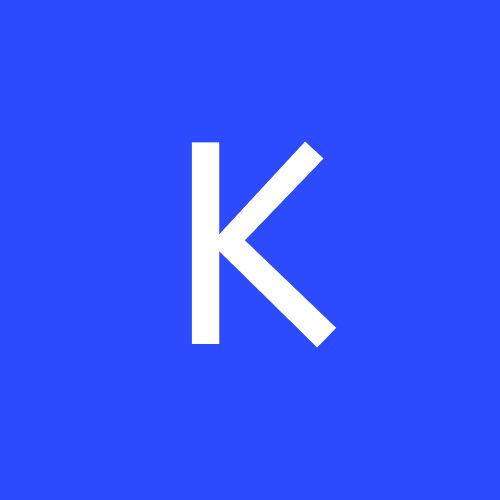A Brand Strategy Playbook for Winning Hearts and Minds
Learn how the best digital brands put their stamp on the world and create customers for life.
Table of contents …
1 - Introduction to brand
2 - Finding your brand purpose
3 - Crafting your brand’s positioning statement
4 - Discovering your brand’s personality
Introduction to brand
What do we mean when we say “brand”?
It’s a fuzzy concept.
I tend to define it like this:
Brand is the entirety of how someone experiences your company.
Brand is more than a logo and a look. It is more than technology or design or UI/UX. These are component parts of a brand, but a brand built on a catchy name and logo is not enough.
“You can’t have a conversation about brand today that doesn’t start with the overall experience.”
Because of this focus on holistic experience, brand is a company-wide initiative, not meant to live inside marketing alone. The best brands are built and evolved in collaboration with the entire company, across all teams and through all layers of the organization from leadership on down.
Brand strategy includes three key components:
Purpose
Positioning
Personality
(Much more on these below.)
Once you’ve determined your 3 Ps of brand strategy, you place them into a brand management framework. Like this:
How do you know that your brand strategy is effective?
After all, you want all your time and effort to be worth it, right? Mailchimp invests in its brand with the following outcome in mind:
To build a bias for Mailchimp so that when someone is ready for a small business tool Mailchimp is top of mind.
In terms of metrics, you can measure the effectiveness of brand strategy in a few ways:
Market share
Aided and unaided awareness
Branded keyword search
Word-of-mouth acquisition
Sentiment
Aided and unaided awareness surveys are often considered the best way to understand the effectiveness of your brand strategy. Aided and unaided awareness is a survey methodology for measuring brand. Aided awareness asks this question (multiple choice):
Which of these [product category] brands have you heard of? Brand A, Brand B, Brand C, [Your Brand]
Unaided awareness asks this question (open-ended):
What brands come to mind when you think of [product category]?
You can use market research tools like Survey Monkey or Attest to perform these surveys on a quarterly basis.
Brand can be fuel for your existing growth loops and multichannel marketing strategy. A great brand makes everything so much easier — from referrals to virality, traffic to conversions. Your great brand will give you a head start with attracting and acquiring customers.
In particular, brand can be a fuel if you’re growing your company through these loops and channels:
Viral loops, especially with B2C or collaborative B2B products
Sales loops where you need a high volume of inbound
Performance marketing / paid channels
Word-of-mouth loops
There is no ceiling to the positive impact that a brand can have on your business.
When you’re getting your brand off the ground, think of volume and quality. From Reforge:
Brand is a function of the number of exposures and the strength of that exposure. That means people need to hear about a brand multiple times to remember it but also associate it with the specific brand attributes. This makes it easier to acquire new customers over time.
When you’re establishing your brand in a new category, take a “flood and lightning” approach. Get the word out about your brand through major, one-time events like a PR campaign or a big launch, and combine this with an ongoing, steady stream of brand content that’s distributed via search, social, and paid.
The 3 Ps of Branding
The core foundation of a brand strategy is three Ps of branding: purpose, positioning, and personality. These brand decisions should be made company-wide, not exclusively within marketing. Marketers can then take this brand direction and go do great work.
Purpose
“Your purpose is how you want to change the world for the better.”
There are lots of different ways to find a brand’s purpose. If you search for brand exercises, you will find a TON. One of the most popular ones is the Jim Collins vision framework, which includes elements like vivid description and BHAG.
The brand purpose framework I like to use is called The Big IdeaL.
The Big IdeaL comes from Ogilvy, one of the top advertising agencies in the world. It’s used by a number of great tech brands, including Wistia.
With Purpose, you're attempting to answer the question, "Why does this company exist?"
Ideally, you’ll articulate an intersection between what your product does for your customers and a relevant tension within the broader culture. The best brands live in that overlap.
Typically, the process for uncovering Purpose is twofold:
Internally, discuss among the founding team and company leaders to get at the core of why the business exists — both why you created the company in the first place and where you see the company moving forward. If you get stuck at any point, just keep asking “why” or use Simon Sinek’s “Start With Why” exercise
Look externally to determine the cultural moment for your company. This has two parts: 1) external research into market trends and cultural movements and 2) conversations with customers and with your support team to understand what resonates most with your users.
When you’re finished, you’ll have a Venn diagram (see above), and you’ll be able to fill in the blanks of this statement:
[Your company] believes the world would be a better place if _____________.
For example …
Buffer believes the world would be a better place if social media work was rewarding, uplifting, and impactful.
Wistia believes the world would be a better place if marketers could do creative, empowering work.
Figma believes the world would be a better place if design was democratized.
Positioning
Positioning is bit closer to the heart of marketing. I often ask product marketers to be positioning experts on behalf of the company, and I’ve also seen how valuable positioning is for PR, customer service, and any external communications.
This is the simple positioning statement I like to use:
For [target customer]
Who [main pain point or challenge]
[Your Company] is a [product category]
That [key solution your company provides].
Unlike [competitors and alternatives],
[Your Company] is [differentiated in these ways].
This type of framework is useful for:
Internal consistency in how you think about the product and the needs it solves for customers. Can be very helpful in aligning product and marketing teams.
Consistency of website messaging and lifecycle messaging
Here is the statement for Buffer:
For social media managers
Who desire to connect with customers and do impactful work,
Buffer is a social media management platform.
that helps you deliver positive results for your company (and your career) and streamline your online marketing life.
Unlike Sprout Social, Later, and native social media solutions,
Buffer is a focused, affordable product made by a caring team that’s here to support you.
Here is one for Feedly:
For busy professionals
Who follow many news sources,
Feedly is a news reader
that organizes your content and saves you time.
Unlike other RSS readers, native content apps, and direct browsing and reading,
Feedly creates an all-in-one dashboard customized by you and optimized with AI to help you read your feeds enjoyably.
Personality
Simply put, personality answers the question:
If you met your company at a party, how would you describe it?
Relatable
Genuine
Inclusive
Kind of weird, right?
But it’s super valuable. Getting this personality correct can make a huge difference for the voice and tone of your brand. And the voice and tone is what your audience of customers and prospects engaged with most often. A clearly articulated personality will make copywriting and marketing work so much easier and so much more consistent.
Uncovering personality is best as a group exercise. Everyone names as many adjectives as you can think of to describe the brand, then you compare notes. Narrow down the list to three.
Note: The most powerful brand personalities are also unique versus the existing brands in their space. Think of the way that Coda writes its website or Drift speaks to its target customers.
You can use this framework to place yourself and your competitors on the matrix:
And you can use this framework to help with voice and tone:
Example personalities:
Buffer:
Relatable
Genuine
Inclusive
Dunkin’
Familiar
Fun
Friendly
Wendy’s
Sassy
Youthful
Fresh
The Total Brand Management Framework
Hopefully the framework is pretty easy to follow. The outcome we want to achieve is listed at the top: Amazing brand experiences. And from there you work from the bottom up, starting with the 3 Ps of Branding that we just discussed, then creating the systems to implement your brand strategy, training your team on how to build and live the brand, and implementing the brand into clear tactics and channels.
It’s not an ironclad framework, so feel free to adjust to your needs. But keep in mind:
The customer is at the center
Effective brand strategy must begin with a strong foundation (e.g., don’t jump straight into tactics)
This content originally appeared on my weekly newsletter, which you can subscribe to anytime for free.





